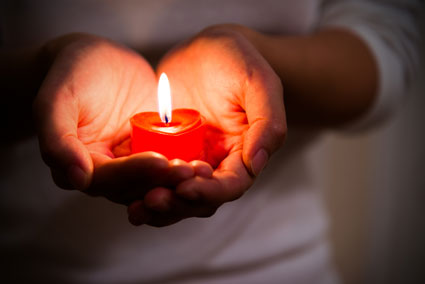Dust Mites
A dust mite is very small – shorter even than the width of a string of hair. Dust mites attach themselves to the fibers of the bedding and mattress, with the claws on their legs. Dust mites feed on our tiny skin flakes that fall off onto the bed. It is certainly not a pleasant thought, especially when we think of our bedroom. These microscopic dust mites can cause health problems such as asthma, bronchitis, and itchy eyes, especially for people with allergies.
The good news is that dust mites can be easily controlled by effective cleaning. Washing your bed linens (sheets, pillow cases, mattress covers, and duvets) in hot water will kill dust mites. But, keeping a clean bedroom will prevent them from being a problem in the first place. Regular vacuuming under your bed at least once per month will greatly enhance your ability to keep dust mites at bay.
Each morning, you should air out your bed. Open the windows of your bedroom and roll back the bed covers. Humidity creates an ideal environment in which dust mites can thrive, so aim to keep your bedroom's humidity as low as possible. The ideal temperature for a bedroom should be below 70 degrees, and the humidity below 45%.
Your sheets should be changed at least once per week, or even twice per week when the average temperature is above 70 degrees. Keep your mattresses covered with a mattress cover (one that can also be laundered at least once per month). It will greatly extend the life of your bed, and it will help to reduce dust mites. You should also rotate and flip your mattress once per month, so that you are not always sleeping on the same spot. This will also greatly extend the life of your mattress.
Bed Care Tips
-
Remove marks from your mattress by using upholstery cleaner, or dilute a drop of concentrated dishwashing liquid in some water. Mix it and then dap a little moisture on the mark and rub with a cotton cloth.
-
Sprinkle baking soda on the mattress, leave it on for a few hours, and then vacuum off. It will remove odors from your mattress.
-
Vacuum your mattress every couple of months using one of the attachments on your vacuum cleaner. Use low suction for vacuuming the mattress. It will help to remove dust, dust mites, and skin flakes.
-
Hang your heavy bed coverings (such as blankets and quilts) outside to air. The air will help to reduce the presence of dust mites and keep your bed linens smelling fresh.
-
Most duvets (which are covers for your comforter) can be washed. Refer to the tag on your duvet for instructions. You might need to take your duvet to a Laundromat if your washing machine is not big enough to handle it.
-
Few people realize that many pillows can be laundered. Check the label for washing instructions. Even some feather pillows can be laundered. Pillows should be laundered about twice per year.
-
You can fluff pillows in the dryer, and placing a few tennis balls in the dryer will help to bring them back to their original, fluffy form.
-
If you choose to iron sheets, iron them when they are very slightly damp.
-
Headboards should be kept clean by polishing them. For upholstery headboards, use one of the attachments on your vacuum cleaner. Marks can also be removed from upholstery with warm, soapy water. For laminate headboards, a gentle cream cleanser can be used. For wooden headboards, polishing is best.
-
Remember that vacuuming dust is the most effective way to remove dust without making it airborne again.
-
If you must use a duster, make your duster very slightly damp. Dust will be attracted to the dampness, rather than just being moved around by a dry duster.
Keeping your Closets and Wardrobe Clean
-
Having a closet that is too crowded will only invite pests, mold, and mildew. The air must circulate freely. Every few months, or at the change of seasons, take an inventory of your clothes and see if there are any that you can donate that you have not worn in a long time.
-
Your rule of thumb should be that if you have not worn a garment in over two years, it is very likely that you will never wear it again.
-
Make room in your closet by packing your out-of-season clothes in a storage bag for the season. You can rotate the contents of your closet each season. This will also make your clothes more easily accessible and easier to find.
-
Bags of cedar bark or packets of lavender will discourage moths in your closet.
-
Store infrequently-used wool clothing in bags to discourage moths.
-
Keep items that tend to attract mildew (such as shoes) on racks instead of on the floor. If you allow the air to circulate around them, it will discourage mildew.
-
Place a few hidden pieces of charcoal in your closet or wardrobe to suck up the moisture in the closet, which will prevent mildew.
Interested in learning more? Why not take an online Housekeeping course? -
Avoid returning soiled clothing to the closet. Human bacteria (such as sweat) will encourage pests to form in your closet.
-
If you wish to return an article of clothing to the closet that has been lightly worn, be sure to air out the garment for a few hours before hanging it up.
Keeping Your Drawers Clean
-
Just as you do for your closets, empty the contents of all your drawers at least once per season to determine what objects you can discard. Bedroom drawers tend to get unorganized very quickly.
-
If you can fit objects in your drawers easily, you are more likely to want to put clothes away where they belong. If your drawers are overcrowded, you are increasing the likelihood that you are going to have a cluttered bedroom.
-
User drawer-lining paper for your bedroom drawers. The paper will help to keep your drawers clean and your clothes clean. You can also use some old wallpaper for this purpose.
Cleaning the Laundry
Cleaning the laundry is a big part of keeping a household clean. By following the care labels attached to garments and following the instructions in this article, you can extend the life of your clothes and make the laundry process easier. The proper storage and maintenance of your clothes is just as important as how you clean them.
General Laundry Tips
We will start with some basic laundry tips and then move into a more detailed discussion of cleaning the laundry.
-
Always read care labels, even if you think you are familiar with a garment's care.
-
Wash clothes promptly – before dirt becomes ingrained in the garment.
-
Treat stains immediately – we will discuss how to combat stains later.
-
Sort laundry into five categories: pure whites, light-colored, bright-colored, dark-colored, and delicates. (More on these categories later).
-
Be sure to empty all pockets before putting clothes in the washing machine.
-
Don't overload the washing machine.
-
Use the correct amount of detergent. Many people tend to use too much.
-
Select the wash cycle for the most delicate item in each wash cycle.
-
Fold clothes as soon as they are dry to prevent creasing.
-
Iron clothes while they are very slightly damp.
When buying clothes, try to avoid purchasing garments that require hand-washing or dry cleaning, especially if you tend to delay these activities. If possible, have several laundry baskets throughout the house, as this will encourage people to put their dirty clothes in a basket rather than having them clutter the house. Dirty clothes should be collected in baskets or containers that allow for air to circulate, and never put wet or damp clothes directly into a clothes basket. Damp clothes will attract mildew and they could be permanently stained.
Sorting the Laundry
Many people sort their clothes into just two categories, whites and darks. But, cleaning the laundry will be a much easier task if your clothes are sorted properly into the five main categories of clothes. You will quickly be able to see, at a glance, which load you need to process next, and it will extend the life of your clothes if they are washed with similar garments.
-
Pure Whites – these are clothes that would benefit from using bleach. Put only pure whites in this category.
-
Lights – these are clothes that are off-white, beige, or pastel. You typically will not use bleach in this load.
-
Darks – mostly blacks, blues, and browns, and other dark clothing. Bleach is never used for dark clothing, unless it is bleach that is specifically formulated for dark clothes. Please read the directions carefully on bleach containers.
-
Brights – Reds, oranges, and fluorescents. These clothes should be washed separately as these colors tend to run in the wash. It is best to wash them separately.
-
Delicates – these are clothes that must be washed very gently, such as fine linens and wools.
As mentioned above, it is best to wash red, orange, and fluorescent clothes separately, due to colorfastness. Colorfastness is a term used to describe if a garment's colors are likely to run in the wash. If a garment is a deep red color, it is likely that it will "bleed" its redness onto other clothes in the wash, especially during the first few times it is in the wash. To test colorfastness, wet a small portion of the garment, and then press a clean, white cloth onto the wet spot. It some of the garment's color runs off onto the white cloth, it is best to wash this garment by hand or with similar-color clothes.
Bed Linens and Towels
Bed linens and towels should be washed at least once per week, and they should also be washed separately from other clothes. It is best to get into the habit of changing your bed linens on the same day of the week. Throw your dirty bed linens in the wash, and then have your next set of linens ready to replace immediately. Depending on the volume of laundry you have, you could make a schedule whereby you do towels and bed linens on a day when you do not have to wash your other clothes.
Loading the Washing Machine
If you overload a washing machine, you are wasting time because the clothes inside will not really be washed effectively. An overloaded machine will decrease wash performance because the clothes will not move freely in the wash, and this movement is what helps to clean them. Also, depending on the machine you have, an overloaded machine might cause the washing machine to become unstable during the spin cycle. This can cause great damage to the machine and your floors.
Detergents and Fabric Softeners
Many store-bought detergents usually contain enzymes, which are effective at loosening oil-based stains on clothes. Some people, though, have an allergy to these enzymes, and in these instances, it is best to your use own homemade washing detergent.
Fabric softeners are meant to make your clothes feel soft and to reduce static-cling. They also make ironing easier. But, contrary to popular belief, it is not advisable to use fabric softeners with towels, as they tend to coat the towels, which contributes to its loss of absorbency.
Common Laundry Problems and How to Fix Them
-
When whites look gray after time – use hotter water or increase the amount of detergent you are using if you are using an insufficient amount.
-
Whites have yellowed stains, especially underarm stains –soak garments in peroxide bleach overnight.
-
White residue on clothing after wash – this is often caused by hard water, so more detergent needs to be used.
-
Mildew on fabric (black spots) – Soak for several hours in non-chlorine bleach, then rewash according to the instructions for the garment.
Hand-Washing Tips for Laundry
-
Don't wash too many items at once, and wash delicates separately.
-
Dissolve the detergent before adding clothes.
-
Try not to wash clothes in the kitchen sink – use the utility room sink if possible.
-
Gently knead the soapy water into the garment for a few minutes.
-
Don't leave clothes in the water for a long period of time unless you are specifically soaking an item according to the garment's directions.
-
Do not wring water from the clothes – gently squeeze them instead.
-
Rinse the garment until no soap can be seen.
-
Dry garment according to the garment's directions.





























